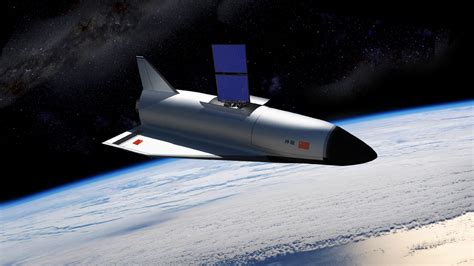
Suspicions have been raised regarding a series of recent flights made by Chinese transport aircraft to Iran, prompting speculation about the nature of the cargo and the potential implications for regional security. At least six flights by what appear to be military transport planes have been observed traveling from China to Iran in recent weeks, with aviation experts and geopolitical analysts closely monitoring the situation for signs of military or dual-use technology transfers. The flights have triggered concerns given existing international sanctions on Iran and the ongoing tensions in the Middle East.
The flights, reportedly conducted by aircraft whose tail numbers suggest affiliation with the Chinese military, have landed at various airports in Iran. However, details about the cargo remain unconfirmed, fueling widespread speculation. The U.S. government and other Western intelligence agencies are believed to be actively investigating the purpose of these flights.
“The nature of these flights and their timing raises legitimate questions,” stated a defense analyst familiar with the matter, who spoke on the condition of anonymity due to the sensitivity of the information. “We need to understand what is being transferred and whether it violates any international agreements or sanctions.”
The ambiguity surrounding the cargo has spurred various theories, ranging from military equipment and technological components to economic aid and humanitarian assistance. Some experts speculate that the flights could be related to the ongoing strategic partnership between China and Iran, which has seen increasing cooperation in various sectors, including energy, infrastructure, and defense.
The timing of these flights is also noteworthy, occurring against a backdrop of heightened tensions in the Middle East. Concerns about Iran’s nuclear program and its support for regional proxies have contributed to instability in the region, and any potential military assistance from China could exacerbate these tensions.
Further complicating the situation is the existing international sanctions regime against Iran, which restricts the transfer of certain goods and technologies. If the flights are found to be in violation of these sanctions, it could lead to further diplomatic friction between China and the international community.
Details of the Flights
While specific details about the exact number of flights vary depending on the source, reports indicate that at least six flights have been tracked using open-source intelligence methods. Aviation enthusiasts and online flight tracking services have documented the routes and destinations of these planes, noting that they originated from various locations in China and landed at different airports across Iran.
The aircraft involved are believed to be military transport planes, possibly belonging to the People’s Liberation Army Air Force (PLAAF). The tail numbers of the aircraft, as reported by independent observers, suggest a military affiliation. However, official confirmation from either the Chinese or Iranian governments has not been provided.
The lack of transparency surrounding these flights has fueled speculation and concern among regional and international observers. The U.S. government, in particular, is closely monitoring the situation and has reportedly raised concerns with Chinese officials about the potential implications of these flights.
Geopolitical Context
The flights from China to Iran occur within a complex geopolitical landscape characterized by shifting alliances, regional conflicts, and international sanctions. China and Iran have cultivated a close strategic partnership in recent years, driven by shared interests and a desire to challenge U.S. dominance in the region.
China is a major trading partner of Iran and has invested heavily in Iranian infrastructure and energy projects. In 2021, the two countries signed a comprehensive cooperation agreement that outlines plans for increased collaboration in various sectors, including trade, energy, security, and technology.
This partnership has raised concerns in the West, particularly regarding the potential for China to provide Iran with military or dual-use technology that could enhance its military capabilities. The U.S. government has repeatedly warned China against violating international sanctions on Iran and has threatened to impose penalties on Chinese companies that do business with the country.
The flights from China to Iran also coincide with ongoing tensions in the Middle East. The conflict in Yemen, the political instability in Lebanon, and the ongoing threat of terrorism have all contributed to a volatile security environment. Iran’s support for regional proxies, such as Hezbollah in Lebanon and the Houthis in Yemen, has further exacerbated these tensions.
Any potential military assistance from China to Iran could further destabilize the region and undermine efforts to promote peace and security. The U.S. government is therefore closely monitoring the situation and working with its allies to deter any actions that could escalate tensions.
Potential Implications
The potential implications of the Chinese transport flights to Iran are far-reaching and could have significant consequences for regional and international security. If the flights are found to be carrying military equipment or dual-use technology, it could enhance Iran’s military capabilities and enable it to pursue its regional ambitions more aggressively.
This could lead to increased tensions with Iran’s neighbors, particularly Saudi Arabia and Israel, and could potentially trigger a wider conflict in the region. The U.S. government has repeatedly stated that it will not allow Iran to acquire nuclear weapons and has threatened to use military force if necessary to prevent it.
The flights could also have implications for the international sanctions regime against Iran. If China is found to be violating these sanctions, it could lead to further diplomatic friction between China and the international community. The U.S. government could impose penalties on Chinese companies that are involved in the flights, which could further strain relations between the two countries.
In addition to the security implications, the flights could also have economic consequences. Increased instability in the Middle East could disrupt oil supplies and lead to higher energy prices. This could have a negative impact on the global economy and could further exacerbate existing economic challenges.
Reactions and Analysis
The reports of Chinese transport flights to Iran have elicited a range of reactions from governments, analysts, and observers around the world. The U.S. government has expressed its concerns to Chinese officials and has called for greater transparency regarding the purpose of the flights.
“We are aware of these reports and are monitoring the situation closely,” said a State Department spokesperson. “We have made it clear to China that we expect them to abide by their international obligations and to refrain from any actions that could undermine regional stability.”
Other countries in the region have also expressed concern about the flights. Saudi Arabia, which is a major rival of Iran, has called for a thorough investigation into the matter. Israel, which views Iran as an existential threat, has warned against any transfer of military technology to Iran.
Analysts and experts have offered various interpretations of the flights. Some believe that they are a sign of China’s growing assertiveness in the Middle East and its willingness to challenge U.S. dominance in the region. Others believe that they are simply a reflection of the close economic and strategic ties between China and Iran.
“China sees Iran as a valuable partner in its efforts to expand its influence in the Middle East,” said a geopolitical analyst. “The two countries share a common interest in countering U.S. influence and promoting a multipolar world order.”
China-Iran Relations: A Deep Dive
The relationship between China and Iran has evolved significantly over the past few decades, transforming from a primarily economic partnership to a strategic alliance with deep political and security dimensions. This evolving dynamic is crucial to understanding the context surrounding the recent transport flights and their potential implications.
Economic Foundation: The foundation of the China-Iran relationship lies in their robust economic ties. China is Iran’s largest trading partner, and Iran is a significant supplier of oil to China. This economic interdependence has created a strong incentive for both countries to maintain close relations, even in the face of international pressure. China has consistently supported Iran’s economy by purchasing its oil, providing essential goods, and investing in infrastructure projects.
Strategic Alignment: Beyond economics, China and Iran share strategic interests that have drawn them closer together. Both countries seek to challenge the existing U.S.-led global order and promote a more multipolar world. They also share concerns about U.S. military presence in the Middle East and view each other as key partners in countering U.S. influence in the region.
Defense Cooperation: Defense cooperation between China and Iran has been increasing in recent years. While the exact nature and extent of this cooperation remain opaque, there have been reports of Chinese assistance to Iran’s military modernization efforts. China has also been a major supplier of weapons and military technology to Iran in the past, although this has been curtailed in recent years due to international sanctions.
The 25-Year Comprehensive Agreement: A landmark agreement that solidified the strategic partnership between China and Iran is the 25-Year Comprehensive Cooperation Agreement, signed in 2021. This agreement outlines plans for increased cooperation in various sectors, including trade, energy, security, and technology. While the details of the agreement remain largely confidential, it is believed to include provisions for Chinese investment in Iranian infrastructure and energy projects, as well as enhanced security cooperation.
Challenges and Constraints: Despite the close relationship, there are also challenges and constraints that could limit the extent of China-Iran cooperation. China is wary of provoking the U.S. and other Western powers and has been careful to avoid violating international sanctions on Iran too blatantly. China also has its own strategic interests in the Middle East, which may not always align perfectly with those of Iran.
The Role of Sanctions
International sanctions on Iran, particularly those imposed by the U.S., have played a significant role in shaping the China-Iran relationship. These sanctions have restricted Iran’s access to international markets and have made it difficult for the country to conduct business with many countries.
China has consistently opposed these sanctions and has argued that they are counterproductive and harmful to the Iranian people. However, China has also been careful to avoid violating these sanctions too blatantly, as it does not want to jeopardize its own access to international markets.
The sanctions have created an opportunity for China to expand its influence in Iran, as many Western companies have been forced to withdraw from the country. China has stepped in to fill this void, investing in Iranian infrastructure and energy projects and providing essential goods and services.
The recent transport flights from China to Iran raise concerns about whether China is violating international sanctions. If the flights are found to be carrying military equipment or dual-use technology, it could lead to further diplomatic friction between China and the international community.
Alternative Explanations for the Flights
While the speculation surrounding military aid is prominent, alternative explanations for the flights exist and must be considered for a balanced perspective:
Economic Aid and Humanitarian Assistance: Given Iran’s economic struggles, exacerbated by sanctions and internal challenges, the flights could be carrying economic aid or humanitarian assistance. China has positioned itself as a provider of such assistance to various countries, and Iran could be a recipient. Essential goods, medical supplies, or equipment for infrastructure projects could be plausible explanations.
Civil Aviation Cooperation: The flights could be related to civil aviation cooperation, such as the delivery of aircraft parts, maintenance equipment, or personnel for training. China’s civil aviation industry has been growing rapidly, and it has been seeking to expand its presence in international markets. Iran’s aviation sector has suffered from years of sanctions, making it reliant on foreign assistance.
Commercial Agreements: The flights might be part of pre-existing commercial agreements between Chinese and Iranian companies. Deliveries of industrial equipment, machinery, or raw materials could be taking place. Such transactions, while potentially sensitive, are not necessarily a violation of sanctions if the goods are not prohibited.
Diplomatic and Government Exchanges: The flights could be used for diplomatic and government exchanges between the two countries. High-level delegations, official documents, or other sensitive materials could be transported via these flights. Such exchanges are common between friendly nations.
International Law and Implications
The legal implications surrounding the Chinese transport flights to Iran are complex and depend on the specific cargo being transported. If the flights are found to be carrying military equipment or dual-use technology that is prohibited under international sanctions, it could constitute a violation of international law.
The United Nations Security Council has imposed a series of sanctions on Iran over the years, aimed at preventing the country from developing nuclear weapons. These sanctions restrict the transfer of certain goods and technologies to Iran, including military equipment, nuclear-related materials, and ballistic missile technology.
If China is found to be violating these sanctions, it could face penalties from the international community. The U.S. government, in particular, has a track record of imposing sanctions on companies and countries that violate its sanctions on Iran.
In addition to the UN sanctions, the U.S. has also imposed its own unilateral sanctions on Iran. These sanctions are even broader than the UN sanctions and restrict a wide range of activities with Iran.
Future Scenarios and Potential Outcomes
Several potential scenarios could unfold in the coming weeks and months, depending on the outcome of the investigations into the Chinese transport flights to Iran.
Increased Scrutiny and Monitoring: Regardless of the findings, the flights are likely to lead to increased scrutiny and monitoring of China-Iran relations. Intelligence agencies and law enforcement agencies will be paying closer attention to any potential violations of international sanctions or transfers of sensitive technology.
Diplomatic Tensions: If the flights are found to be in violation of international sanctions, it could lead to further diplomatic tensions between China and the international community. The U.S. government is likely to pressure China to cease any activities that could undermine regional stability.
Increased Regional Instability: If the flights are found to be carrying military equipment or dual-use technology, it could increase regional instability. Iran’s neighbors, particularly Saudi Arabia and Israel, are likely to view this as a provocative act and could take steps to counter Iran’s growing military capabilities.
Strengthening of China-Iran Ties: Despite the potential risks, the flights could also strengthen China-Iran ties. China may view this as an opportunity to demonstrate its support for Iran and to challenge U.S. dominance in the region.
The Perspective of Other Nations
The situation also is being reviewed by other global players. How they perceive and react to this issue is also important.
European Union: The EU has traditionally been committed to the Iran nuclear deal (JCPOA) and has tried to maintain a delicate balance between engaging with Iran and addressing concerns about its nuclear program and regional activities. If the Chinese flights are deemed to violate UN sanctions or contribute to regional instability, the EU may face increased pressure to take a firmer stance. This could strain relations between the EU and China, especially if the EU feels China is undermining international efforts to contain Iran’s nuclear ambitions.
Russia: Russia has a complex relationship with both China and Iran. While Russia also seeks to challenge U.S. dominance and has deepened its strategic partnership with China, it has its own interests in the Middle East and a somewhat different approach to Iran. Russia could use the situation to its advantage, potentially mediating between Iran and other regional actors or offering alternative solutions to concerns about Iran’s military capabilities. However, if the Chinese flights directly threaten Russian interests or security, Russia may also express concerns.
Middle Eastern Countries: Countries in the Middle East, particularly Saudi Arabia and Israel, are likely to view the Chinese flights with heightened concern. Saudi Arabia, as Iran’s main regional rival, may see the flights as a sign of increased Chinese support for Iran’s destabilizing activities. Israel, which views Iran as an existential threat, may interpret the flights as a direct challenge to its security and may take preemptive measures to counter any potential military buildup in Iran.
India: India has traditionally maintained good relations with both Iran and the United States. It has economic interests in Iran, particularly related to energy and connectivity projects like the Chabahar port. However, India also values its strategic partnership with the United States. Therefore, India is likely to adopt a cautious approach, seeking to balance its interests and avoid taking sides in the dispute. It may encourage dialogue and diplomacy to resolve the situation peacefully.
Frequently Asked Questions (FAQ)
Q1: What exactly are these “mystery transport planes” and where did they come from? A1: Reports indicate the planes are likely military transport aircraft, potentially belonging to the People’s Liberation Army Air Force (PLAAF) of China. The exact type of aircraft hasn’t been officially confirmed. They originated from various locations in China before landing in Iran. The tail numbers suggest military affiliation, but official confirmation is lacking.
Q2: What is the potential cargo on these planes, and why is it causing so much concern? A2: The exact cargo is unknown, which fuels speculation. Possible contents range from economic aid and humanitarian supplies to military equipment and dual-use technologies. The concern stems from the potential for military aid to enhance Iran’s capabilities, violating international sanctions, and further destabilizing the tense Middle East region.
Q3: Are these flights a violation of international sanctions against Iran? A3: This depends on the cargo. If the planes are carrying items prohibited under UN Security Council sanctions or U.S. sanctions, such as weapons or nuclear-related technology, it would constitute a violation. Investigations are underway to determine the nature of the cargo and whether any sanctions have been breached.
Q4: How does this situation impact the relationship between China and Iran? A4: The flights highlight the growing strategic partnership between China and Iran, driven by shared interests and a desire to challenge U.S. influence. However, if the flights are found to violate sanctions, it could strain the relationship if China faces international pressure or penalties as a result.
Q5: What are the potential consequences for regional and global security if these flights are carrying military aid? A5: The consequences could be significant. Increased Iranian military capabilities could escalate tensions with regional rivals like Saudi Arabia and Israel, potentially leading to conflict. It could also undermine efforts to revive the Iran nuclear deal and further destabilize the already volatile Middle East. Globally, it could strain relations between China and the West, leading to further geopolitical friction.









